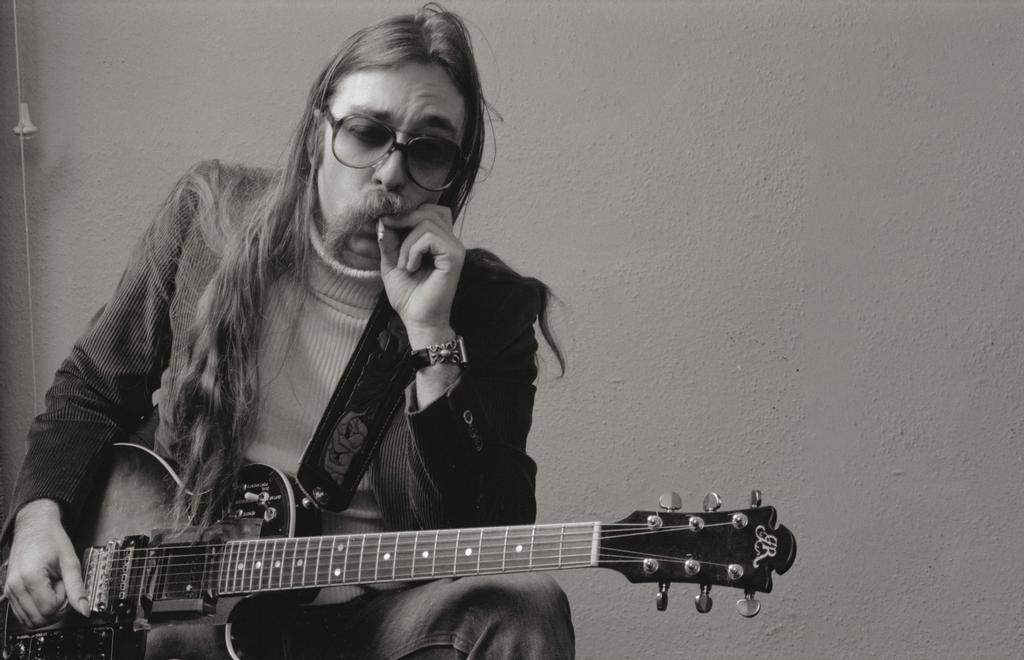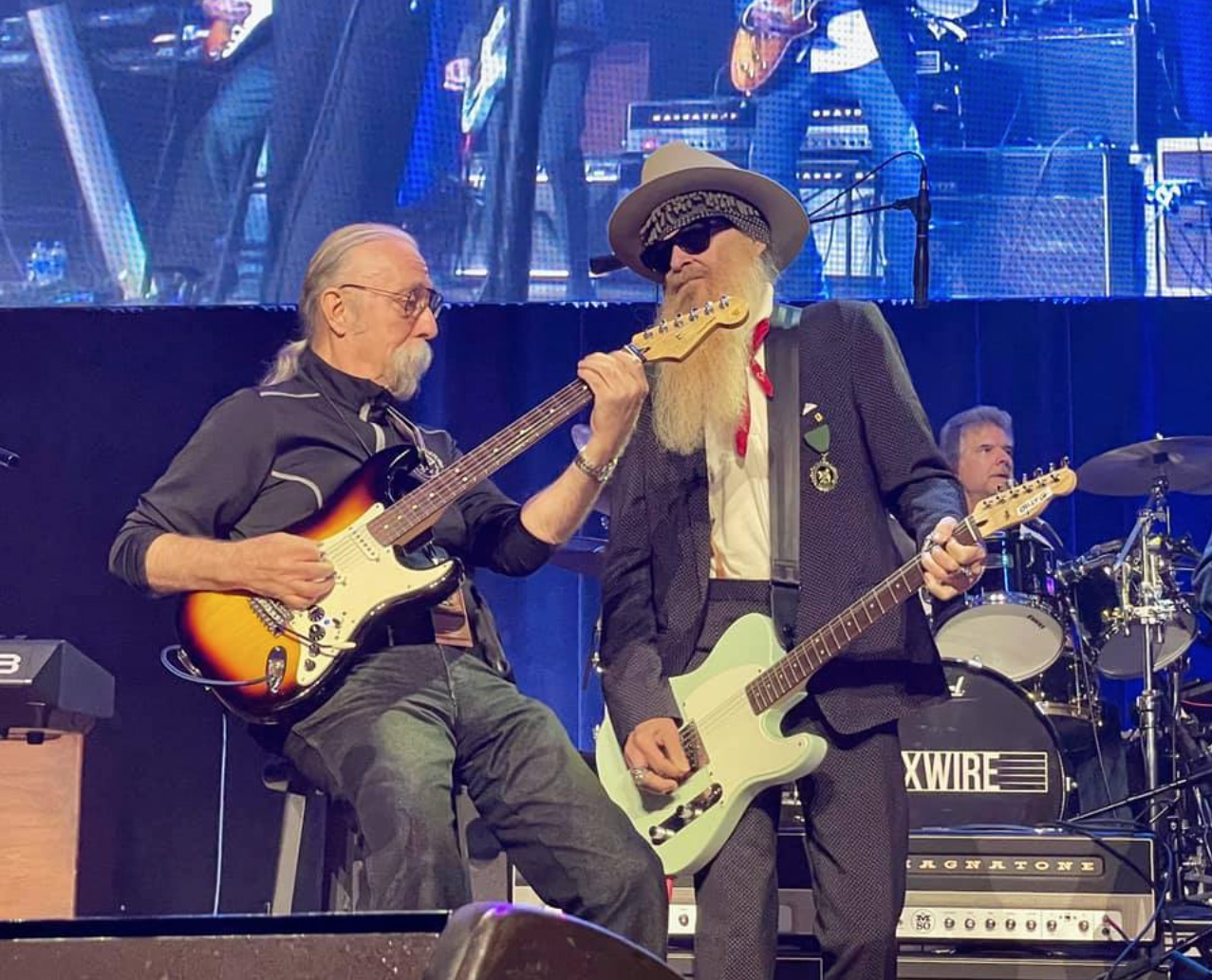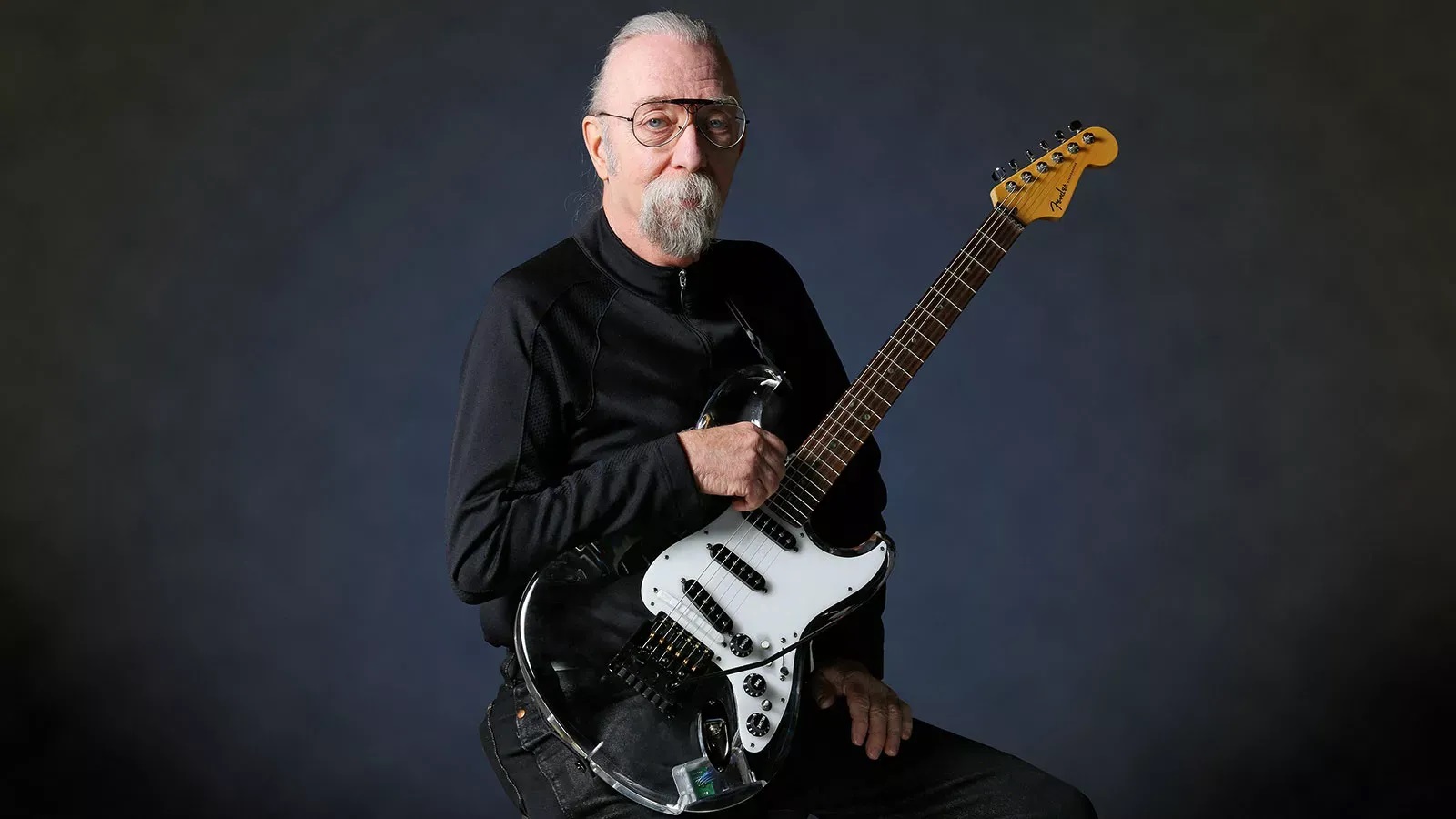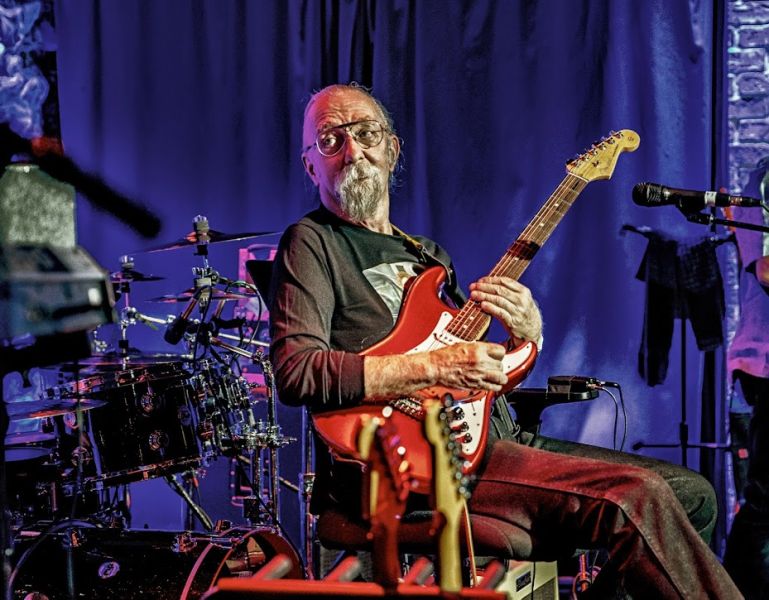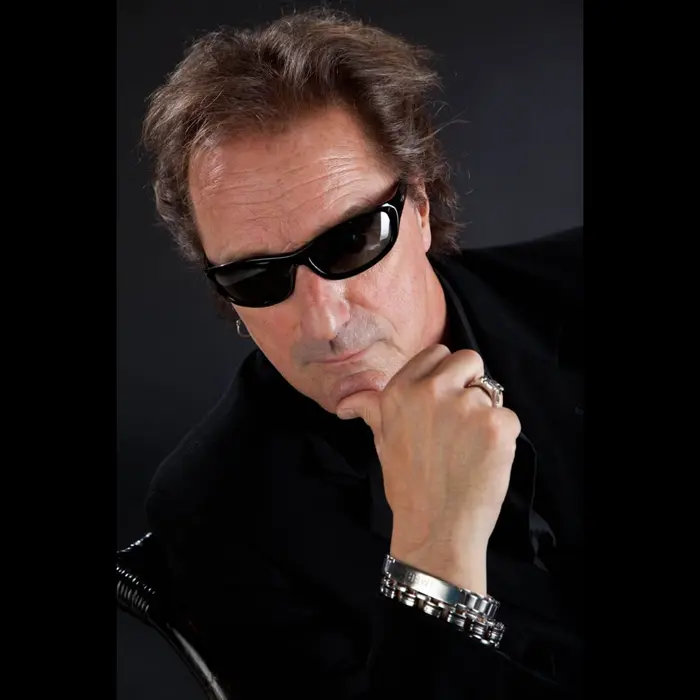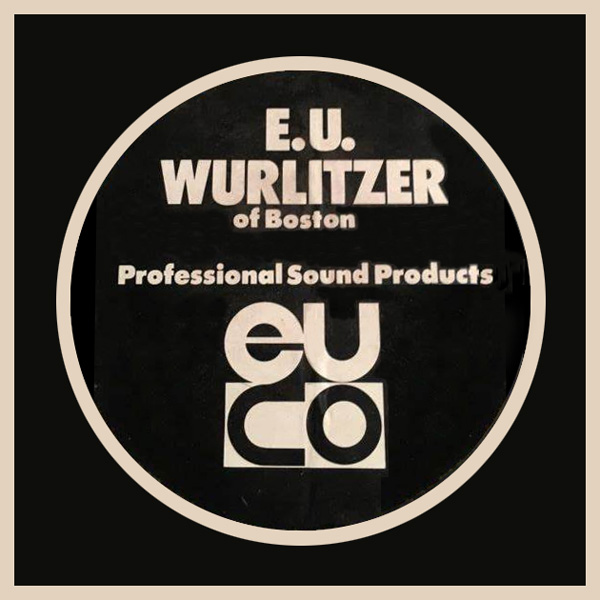Jeff “Skunk” Baxter

Jeff “Skunk” Baxter has accomplished something as rare as a Haley’s Comet sighting in the musical universe: being part of two astronomically successful and influential rock bands, Steely Dan and The Doobie Brothers, and also being a first-call studio cat who’s recorded with a multigenred galaxy of other megastars.
For over 50 years, the famously creative, tremendously accomplished, biker-mustachioed guitarist – who also plays drums and keyboards – has been an axe-slingin’ force of nature, a finger-flamin’, fret-scorchin’, riff-rippin’ example of what virtually every musician considers “living the dream.” Having contributed his phenomenal technique and extraordinary versatility to more albums than some of the most avid record collectors own – the term “living legend” applies – Baxter is a household name among both producers and players, universally respected as a “musician’s musician” and a preeminent “hired gun” for recording and touring. In 2020, he was inducted into the Rock & Roll Hall of Fame as part of The Doobie Brothers.
Musical beginnings, Early influences, The Tarantulas
Born December 13, 1948 in Washington, DC, Baxter grew up in a musical home where his mother played classical pieces on the family piano and his father had an expansive record collection of classical, jazz, big band, blues, boogie-woogie and Dixieland.
From age five to 12, he took piano lessons and learned to read music and at age nine, when he moved to Mexico City with his family for his father’s job, Christmas was a harbinger of Baxter’s future when his parents gave him a guitar instead of what he wanted, a bicycle. “That really pissed me off,” he says, and he had absolutely no interest in the instrument until six months later, when a friend showed him some basics. “As soon as I learned a few chords, all I wanted to do was play guitar,” he recalls.
A self-taught guitarist, Baxter cites his earliest major influences as Bob Bogle on The Ventures’ album Walk Don’t Run and Howard Roberts’ Color Him Funky and HR is a Dirty Guitar Player. He was a member of the Bob Bogle Fan Club while still in elementary school.
At age 11, Baxter formed his first band, surf-rock group The Tarantulas, with two boys his age, bassist Abraham Laboriel, who would later graduate from Berklee College of Music, and drummer Adolfo “Fito” de la Parra, who joined Canned Heat (co-founded by Alan “Blind Owl” Wilson) in 1967 and remains with the band today. Around the same time, he started playing drums.
Jimmy’s Music Shop, Dan Armstrong’s Guitar Service
In the early ‘60s, Baxter’s musical education expanded exponentially while he was a boarding student at the Taft School in Watertown, Connecticut, where he played drums in King Thunder and the Lightning Bolts. During school holidays he worked at Jimmy’s Music Shop on 48th Street in New York, where he taught himself how to repair, build and customize guitars, and then as a technician at Dan Armstrong’s Guitar Service, the city’s indisputable go-to spot for repairs and customization – and a mecca for premier players.
Meeting the greats, Sitting in with Hendrix
“That changed my life,” Baxter says, since at Armstrong’s he met and did work for Andrés Segovia, Les Paul and myriad other greats including Jimi Hendrix, who once invited 17-year old Baxter to sit in on a couple songs with his band Jimmy James and the Blue Flames when regular bassist Randy Palmer was late to a gig. “I played one night with them,” he stresses, dispelling the common misconception that he was a full-time band member.
Move to Boston, Guitar repair shop, Faith, Ultimate Spinach
In 1967, Baxter enrolled at Boston University where he and bluesman James Montgomery lived in the same dorm and jammed together around campus. He worked at Jack’s Drum Shop, played guitar with The Sid Caesar Trio, taught himself pedal-steel guitar, and eventually joined rock quintet Faith, managed by promotor Al Dotoli (who says Baxter “could play anything that had strings”).
In 1969, he and luthier Dave Schecter opened Burbank Street Guitar Repair Shop, doing repairs for Jack’s, E.U Wurlitzer and other stores and Baxter joined Ultimate Spinach, fronted by ex-Chamaeleon Church and The Lost singer-songwriter Ted Meyers, who calls Baxter “the best lead guitarist I had worked with.” Baxter gigged across New England with the band and played on their final album, Ultimate Spinach III.
Spire, Holy Modal Rounders, Early session work
In 1970, Baxter co-founded the short-lived band Spire before joining Quill drummer Roger North in psychedelic-folk group Holy Modal Rounders while playing frequent sessions at Petrucci & Atwell Studios – which became Intermedia Sound Studios in 1971 – and in New York, including at Jimi Hendrix’s Electric Ladyland Studios as lead guitarist on singer P.J. Colt’s self-titled, blues-fueled debut album, produced by Amphion’s Ray Paret. In 1971, while with Holy Modal Rounders, he also played in the show band for one of legendary jazz promoter Fred Taylor’s productions at Paul’s Mall.
Move to Los Angeles, co-founding Steely Dan
In 1972, after relocating to Los Angeles for studio work, Baxter became a founding member of Steely Dan and was instrumental in assembling the band. He’d worked with songwriters Walter Becker and Donald Fagen before at a New York session, and when they decided to make a demo they brought in Baxter and guitarist Danny Diaz, asking both to recommend others who might join; Baxter suggested drummer Jimmy Hodder of Boston-based band The Bead Game and vocalist David Palmer, whom he knew from sessions, and the original lineup was set.
ABC Records President Jay Lasker signed the band immediately after hearing the demo and Baxter appears on Steely Dan’s first three albums – two platinum, one gold – including Countdown to Ecstasy, showcasing his pedal-steel virtuosity on “Razor Boy,” and Pretzel Logic, featuring his iconic solo on “Rikki Don’t Lose That Number.”
Leaving Steely Dan, Joining the Doobie Brothers
In 1974, Baxter left Steely Dan for the Doobie Brothers, formed in 1970, primarily because Becker and Fagen wanted to stop touring and Baxter didn’t. His first LP with the band was Stampede and when vocalist-guitarist Tom Johnson fell ill before the supporting tour, once again Baxter’s personnel recommendation was invaluable: Michael McDonald, then part of Steely Dan’s touring band. McDonald joined the tour, became a full-time band member and he and Baxter appeared together on three more albums –again, two platinum, one gold – before Baxter’s departure in 1979.
1980s: Sessions, Touring, Composing, Producing
In the ‘80s, Baxter played on albums by Eric Clapton, Ringo Starr, Rod Stewart, Gene Clark, Barbara Streisand, Carly Simon, Joni Mitchell, Dolly Parton, Donna Summer and others and toured with Elton John, Linda Ronstadt and Billy Vera. He also played on Spirit’s Spirit of ’84 (1982) and Bobby and the Midnites’ Where the Beat Meets the Street (1984) while composing, performing and producing several film/television scores. In 1986, he joined James Brown and Maceo Parker on part of their North American tour.
1990s: The Best, Guitar documentary, Design consulting
In 1990, Baxter, John Entwistle, Joe Walsh, Keith Emerson, Simon Phillips and Rick Livingstone formed the supergroup The Best, releasing a live-performance video, Yokohama Arena 1990. During the rest of the decade, Baxter produced albums for Nazareth, The Ventures, Carl Wilson, Livingston Taylor, Nils Lofgren and Stray Cats and the documentary Guitar (1991) while working as a design consultant for Gibson, Epiphone, Akai, Roland and Audio-Technica.
2000s: Tribute albums, Missile-defense consulting, The Beach Boys
In the 2000s, Baxter’s continued his wide-ranging studio work, including on Pink Floyd and Aerosmith tribute albums, while also becoming a self-taught missile-defense systems expert, consulting for both the US government and defense-equipment manufacturers. In 2012, he played on The Beach Boys’ That’s Why God Made the Radio and jazz-rock keyboardist Brian Auger’s Language of the Heart.
Speed of Heat, Reflections on Boston, New England, Fame
In June 2022, BMG/Renew Records released Baxter’s first solo album, Speed of Heat, which features originals and covers and one reviewer called “a brilliant sonic mosaic.” A collaboration with songwriter-keyboardist-producer CJ Vanston, guest artists include Michael McDonald, Clint Black, Rick Livingstone and Jonny Lang and it has a rip-roaring rendition of Steely Dan’s “My Old School” on which Baxter sings a rare lead. During the supporting tour, Baxter performed at TCAN in Natick, Massachusetts, and a number of other venues across New England.
Looking back on his 50-plus years as a professional musician, Baxter cites his time in Boston and around New England as foundational to his success. “I spent some great years in the Boston area, met and played with some amazing musicians,” he says. “And because the music scene in New England was so diverse – jazz, funk, rock and roll, country, blues – I used that opportunity to hone the skills that stood me in great stead as a studio musician to this day. Besides, there was no better pork sandwich in the known universe than the ones from Buzzy’s By The Wall!””
Asked what it’s like having millions of fans worldwide, Baxter answered with typical humility. “Well, ’nice’ might be the wrong word,” he says. “It’s fulfilling to be appreciated and to have touched people’s hearts in a good way – to have brought them whatever it is that they can leverage off the music for their own self-improvement.”
(by D.S. Monahan)




